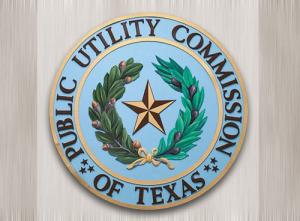Lubbock, Texas Gets Green Light to Join ERCOT

Following more than two years of study and negotiation, the Texas Public Utility Commission has granted a petition from the City of Lubbock for authority to participate in the Electric Reliability Council of Texas (ERCOT).
The move marks the first time a municipality with generation capabilities has opted to be part of ERCOT and thus secure electricity supply for city residents via the state's restructured electric market. That deregulation construct had first been instituted more than 15 years ago, with ERCOT created to oversee the electric grid for most of Texas. It now manages the grid in about 90% of the state.
Lubbock for some time had been contemplating switching to ERCOT from the Southwest Power Pool (SPP), ultimately determining that the change would bring more competitive offerings for electric supply, and thus reduced rates, to its citizens. However, per its exit agreement with the SPP, not all of the municipal utility's load will be transferred to ERCOT. Rather, only about 70% of Lubbock consumers would be affected.
Electricity service in the city long has been provided by Lubbock Power & Light (LP&L), a municipally owned and operated utility having monopoly status in Lubbock and nearby environs. Historically, LP&L, like other utilities in the panhandle of Texas, has been a member of the SPP. But, given that most of the wholesale market administered by the SPP is outside of Texas, officials in Lubbock had begun inquiring into the possibility of joining ERCOT instead, so as to take advantage of what they perceived as greater opportunities for consumer choice and resource diversity.
Although the municipal utility acknowledged that it would incur significant expense in leaving the SPP and joining ERCOT, it told the Texas commission that it was likely to have to invest substantial amounts in capital projects even if it were to remain with the SPP. The city expounded that by having access to ERCOT markets, LP&L could avert the need to construct a new power plant, the cost of which it pegged at as much as $700 million. The municipality averred that new generation facilities would definitely be required were LP&L to stay with the SPP.
In making its case for participating in ERCOT, the city stated that it was aware that it would have to provide funding for certain new transmission plant through which to connect with the ERCOT-managed grid. It added that it recognized that the cost of such work could be $350 million or more. Lubbock similarly conceded that it would have to shoulder certain exit fees due the SPP to make up for transmission plant investments already made by the SPP to support interconnections with the municipal utility.
Nevertheless, the city related that after weighing the costs versus benefits of the move, it was convinced that the benefits would exceed the costs in the end. In particular, the municipal utility pointed out that by moving to ERCOT, it will no longer have to pay $20 million a year in fixed capacity fees. Moreover, LP&L attested, much of the cost of new transmission facilities had been accounted for previously in the utility's long-term capital improvement plan, such that incremental investments had already been budgeted for.
In examining the municipality's proposal, the commission noted that participation in ERCOT obviously would provide LP&L with the opportunity to diversify its generation portfolio. To that end, the commission observed that the wholesale market overseen by ERCOT includes more than 1,100 vendors operating some 550 different power plants. The commission agreed with LP&L's assessment that joining ERCOT would add significant wind energy and natural gas-fired generation to the utility's supply portfolio.
While the commission concurred that the city and its citizens would benefit from the move to ERCOT, future investment commitments notwithstanding, it explained that the plan could not be approved absent a showing that inclusion of LP&L in ERCOT would not disrupt the market operations of either ERCOT or the SPP. Likewise, the commission said, the move could not be authorized unless it was demonstrated that it will cause no price hikes for other ERCOT or SPP utilities and consumers. That is, the commission emphasized, it is necessary to assure that non-LP&L customers are held harmless for any costs associated with the change.
But, the commission stated, those concerns were assuaged by the settlement LP&L had reached with both the SPP and ERCOT. Under the terms of that agreement, the municipal utility's joinder with ERCOT will not be finalized until 2021. During the transition period, LP&L is to pay ERCOT $22 million a year for five years as a means of contributing to the costs of the transmission upgrades necessary for accommodating the increased load from Lubbock. Plus, coincident with the changeover date, LP&L is to provide the SPP with a one-time payment of $24 million, to help offset the SPP's respective investment in transmission facilities used in service to the municipality.
The commission commented that while the settlement sets forth a date of June 1, 2021, as the date upon which LP&L will be fully integrated into ERCOT's system, ERCOT retains the ability to delay that date if it finds that overall reliability would be compromised thereby or if requisite transmission facility upgrades and additions have not been completed by then. Re City of Lubbock through Lubbock Power & Light, PUC Docket No. 47576, Mar. 15, 2018 (Tex.P.U.C.).



